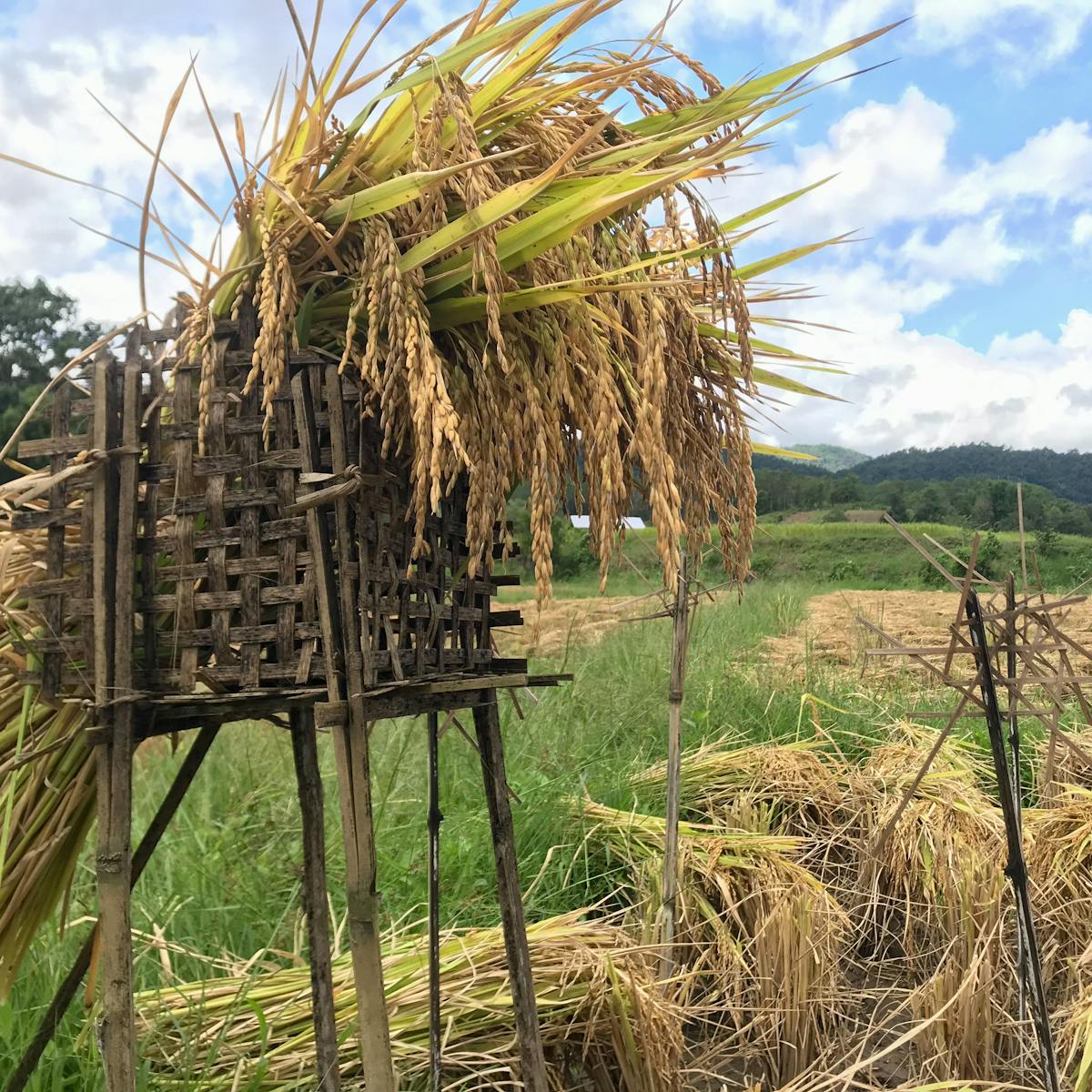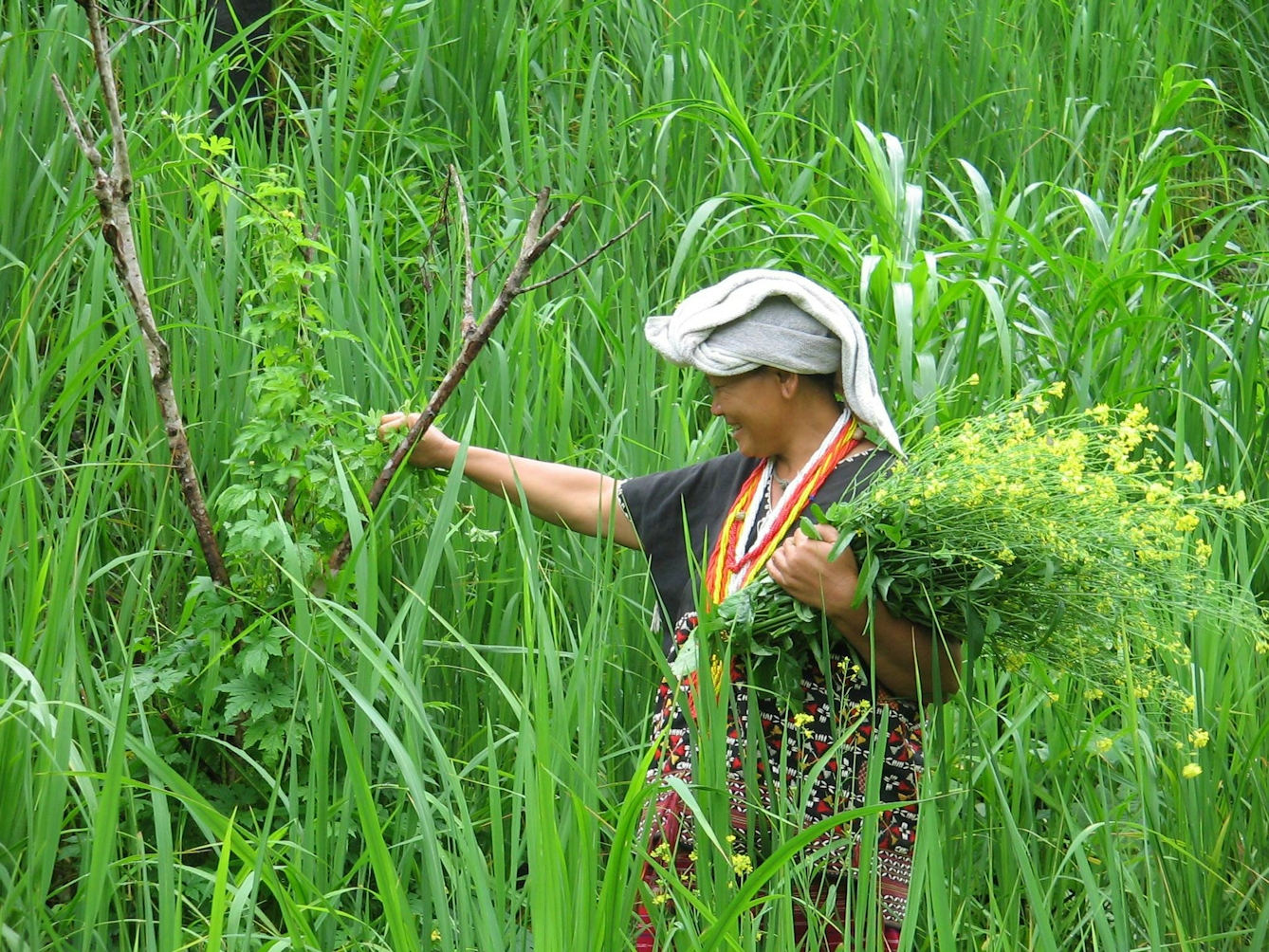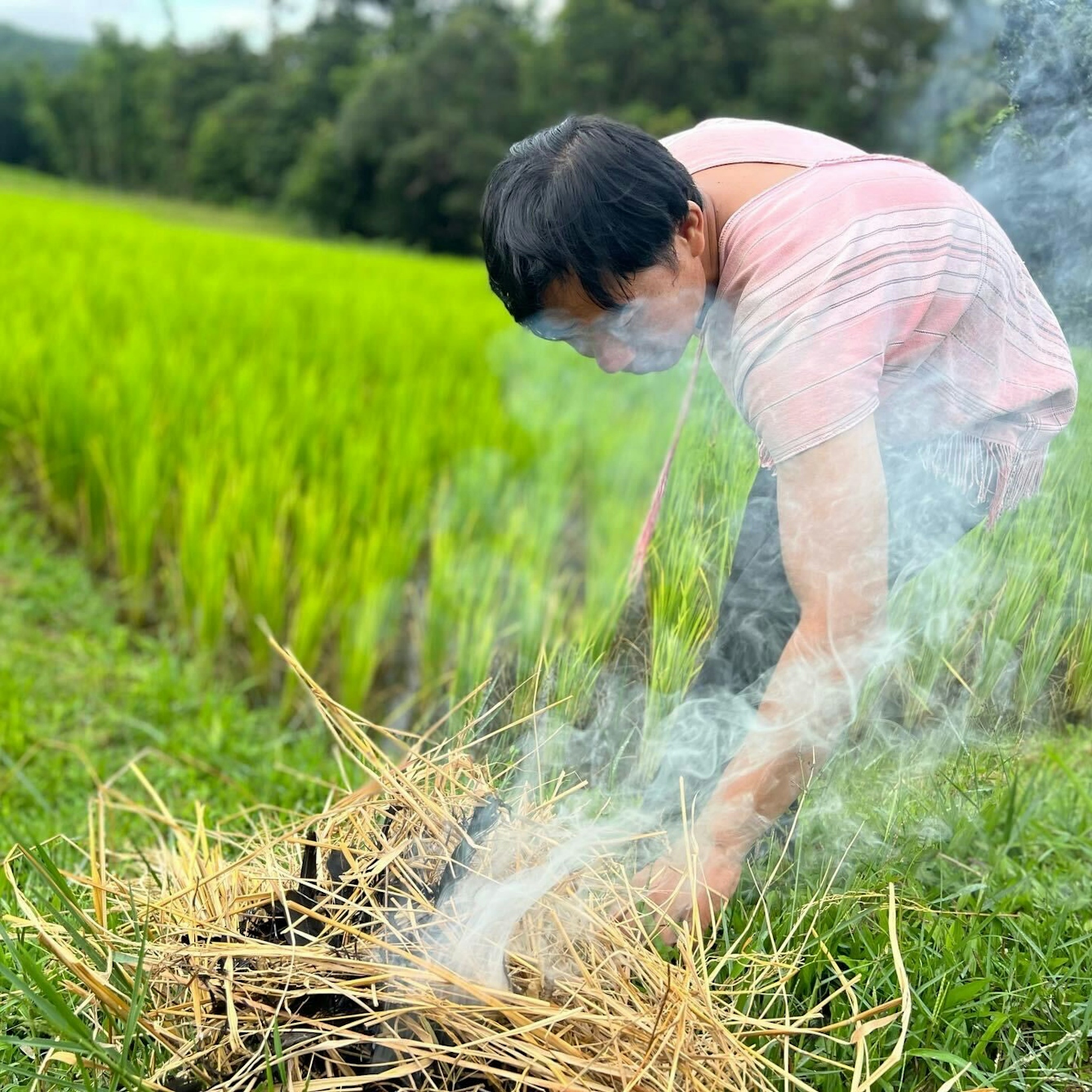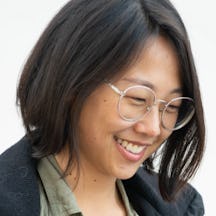Critics of the Ban Nong Tao Pgak’yau community argue that their traditional practices of burning and clearing land in Northern Thailand is bad for the environment and have sought to legislate against them. Here, Siwakorn Odochao explains how controlled burning is a process of paying respect – to the fire, to the air that is shared by trees and humans, and to the entire environment.

In Pgak’yau culture, we have a saying: “The most delicious thing is rice. The most beautiful thing is humanity. The coldest thing is water. The hottest and warmest thing is fire. The most important thing is air and breath.”
The world evolved from seven layers beneath the ground and seven layers above. Each layer is made of soil, water, wind, fire, rock, gravel, sand, iron, living creatures and stars, but the only elements on Earth are humans and plants. We work together to balance all seven layers and each other.
This union of people and plants starts at birth. When a baby is born, parents place the placenta in a bamboo tube and tie it to a tree. Children grow up spiritually connected to that tree for life, reminding them of our physical connection. Trees purify the air we breathe, and we breathe that air back to help trees grow.
Our ancestors taught us rotational farming so we may continue living with the Earth and help nature as much as nature helps us. Every year, we alternate cultivation between different plots within the same area while leaving the other plots fallow. At the end of every seven-year cycle, we grow enough food for the community and those plots regrow into forests.
We’ve lived this way for 700 years. The rotational farming season usually starts in the New Year, or Gee Jeu Nee Saw Ko in Pgak’yau. In the two weeks that fall between the end of January to the beginning of April, we start the season by singing Eu Tah, traditional poems, about the relationship between people, seeds and nature. Most songs have two parts sung by a man and a woman elder responding to each other. All songs have something to do with rotational farming and celebrating brothers, sisters, and all the people needed to work the land together.
The never-ending circle
Families choose plots based on a couple of factors. In the daytime, we look for public spaces with people nearby because every community member should have access to it. Once we find a spot, we ask permission from nature and neighbours to get an idea of that area’s condition.

“Our ancestors taught us rotational farming so we may continue living with the Earth and help nature as much as nature helps us.”
With everyone’s permission, we claim that spot by staking a wooden cross, and go home to dream. If we dream of elephants, rivers or mountains, or we don’t dream at all, we know it’s the right spot. But if we dream of insects, tigers, turtles, or hear a barking deer as we walk through that plot, we keep searching.
Once we choose our plot, we cut all the trees and plants around waist height, so we don’t interfere with the soil structure or roots. Also, our songs tell us, “If you want to cut (cut) a branch, don't cut (cut) all the branches off, leaving one branch for the firebird to rest for a while.”
หากจะริด(ตัด)กิ่งไม้อย่าริด(ตัด)กิ่งไม้ออกไปทั้งหมดเหลือไว้ให้นกพญาไฟมาพักหนึ่งกิ่ง
Then the trees dry for about two months. At the end of April, which is usually the end of the dry season and the beginning of the rainy season, the area is in the perfect condition for a controlled burn.
On a day with light winds, the different families surround the plot so we can put out any wayward sparks. The ground is still wet from early rains, so the fire lasts for no more than one hour.
People accuse us of burning forests and polluting the city with this smoke, but they don’t understand. Fire is integral to Pgak’yau culture. We use it sparingly and with respect. Ash from the controlled burn fertilises the soil, repels insects, and helps cultivate many different crops.
Once the controlled burn is over, we sprinkle rice, sesame, chilli, pumpkin, potatoes, tomatoes, beans… many different seeds. When the rainy season starts, the seeds start sprouting within seven days and we wait until November to harvest, weeding every once in a while.

“At the end of April, which is usually the end of the dry season and the beginning of the rainy season, the area is in the perfect condition for a controlled burn.”
After harvest, the land stays fallow for seven to eight years until it regenerates back into a forest. The tree stumps we cut down regrow to the height of seven men, germinating from the existing root. We cycle between seven plots of land every year, so there’s a never-ending circle of feeding and growing.
An hour of burning every year brings humans, trees and land back into balance, but people tend to forget. In this modern age, people are unable to satisfy the desire for accumulating wealth, even though we have everything we need to survive. Like the song we sing during the new year:
สิ่งที่ดีเมื่อแม่ยังอยู่
สิ่งที่ดีเมื่อพ่อยังอยู่
เก็บหัวเผือกเอาไว้ให้เรา
เก็บหัวมันเอาไว้ให้เรา
เก็บไว้ครบ 30 ชนิด
ถึงแร้นแค้นเราก็มีกิน
The good thing is when the mother is still alive.
The good thing is when the father is still alive.
Keep the taro head for us.
Keep the potato head for us.
Store all 30 types of seeds.
Even in poverty, we have food.
About the contributors
Siwakorn Odochao
Siwakorn Odochao grew up in Karen village with nine brothers and sisters, learning local wisdom and traditional knowledge. He also finished a master’s degree from the Open University. Learning about global change with local roots is also part of what he learned from ARI (Asean Rural Institute) in 2009. Siwakorn believes that small-scale farming can lead to sustainable development and beautiful living. In 2011, Siwakorn started Lazy Man Coffee to fight mono-cropping corn and introduce alternative farming to the people in Karen village. He hopes to direct the coffee market to Thailand and share the “slow down for the Earth” philosophy. “The most delicious is rice, the most beautiful is human, the best smelling is a baby, the coolest water. Pgak’yau words that fell into my heart since I first heard them.”
Jennifer Katanyoutanant
Jennifer Katanyoutanant works with interactive mediums like VR, installations and food to facilitate communication and co-create systems of sharing and exchange. Recent fascinations include food-systems research through sensory interactions, playable critical thought and virtual spaces for shifting power imbalance. Past projects explored ecological manifestations of the YouTube recommendation algorithm, diverse creative communities in emerging technology, and cultivating remote intimacy through food and web performance.

